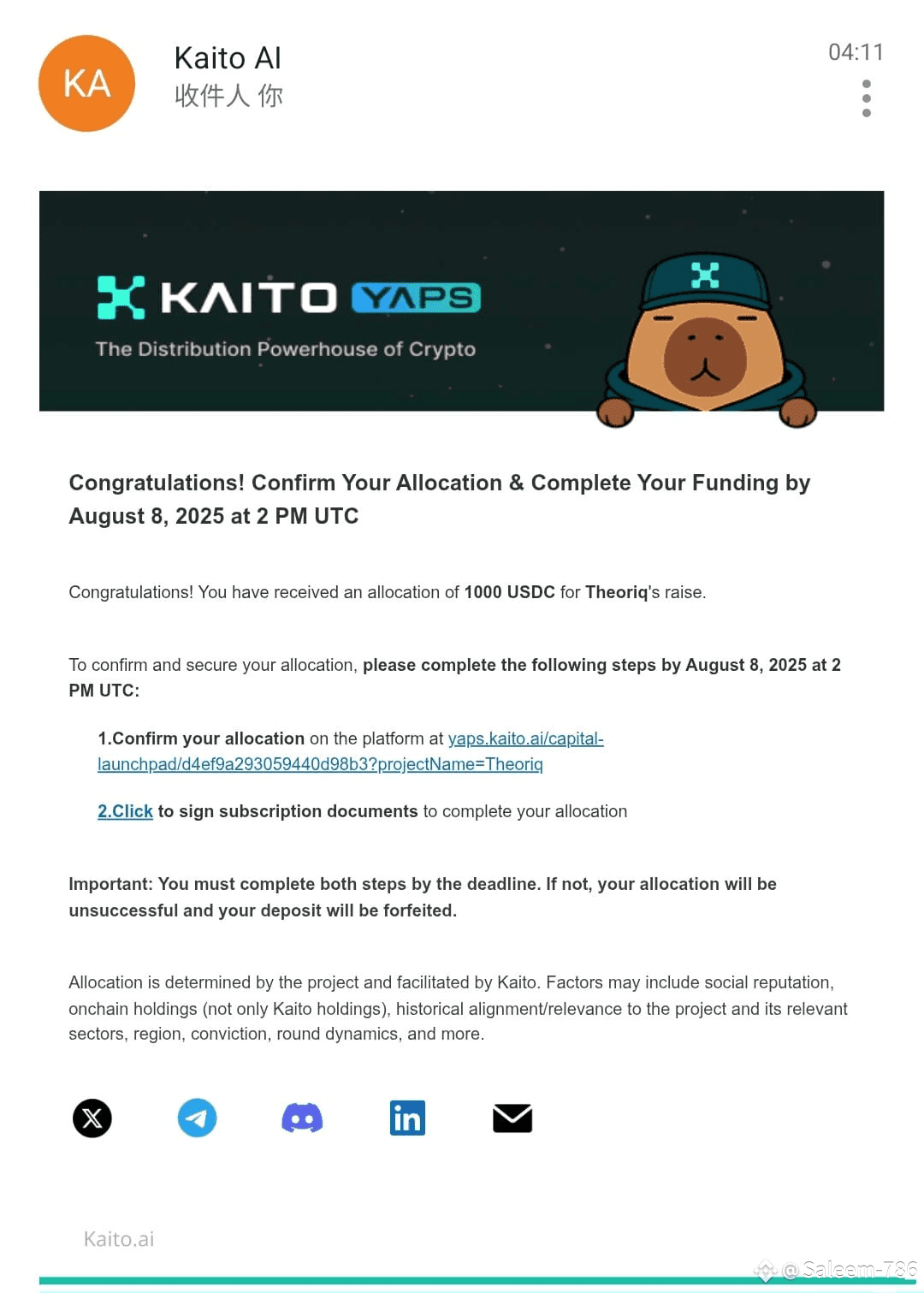In the fast-evolving world of blockchain public offerings, timing and transparency can make or break a participant’s experience. I recently engaged with several offerings—each revealing different facets of how projects handle community engagement, token distribution, and post-pledge dynamics.
TheoriqAI & KaitoAI: A One-Time Pledge, A Limited Window
I joined the public offering on @KaitoAI, securing a share from @TheoriqAI. However, the structure of the pledge was rigid—only a one-time deposit was allowed. I had committed 1000u, but the inability to increase my stake later felt limiting. For participants who discover the value of a project post-pledge, this kind of inflexible mechanism can be frustrating and counterproductive.
EspressoSys: A Strategic Opt-Out
Another opportunity came via @EspressoSys, where I was allocated a share worth 1000u. The confirmation deadline was tight—10 PM last night—and I ultimately chose not to proceed. My decision was based on several factors:
The market valuation of 400 million u felt inflated.
A lock-up period was initially communicated, reducing short-term liquidity.
The overall structure lacked clarity, making it hard to assess the true value of participation.
But today, @EspressoSys made a surprising announcement: users who confirmed participation received 25,000 coins for free, with no lock-up period. This post-hoc adjustment raises questions about transparency and fairness. Retroactive compensation may appease confirmed users, but it undermines trust for those who opted out based on the original terms.
Reflections on Public Offering Models
These experiences highlight a recurring issue in token launches: lack of upfront clarity. When projects revise terms after deadlines or introduce unexpected rewards, it creates a perception of randomness rather than strategic planning. For creators and investors alike, this erodes confidence in the offering model.
As someone who values thoughtful participation and strategic analysis, I believe public offerings should prioritize:
Clear, upfront communication of terms and rewards.
Flexible pledge structures that allow participants to adjust based on evolving insights.
Consistent valuation logic that aligns with market realities.
